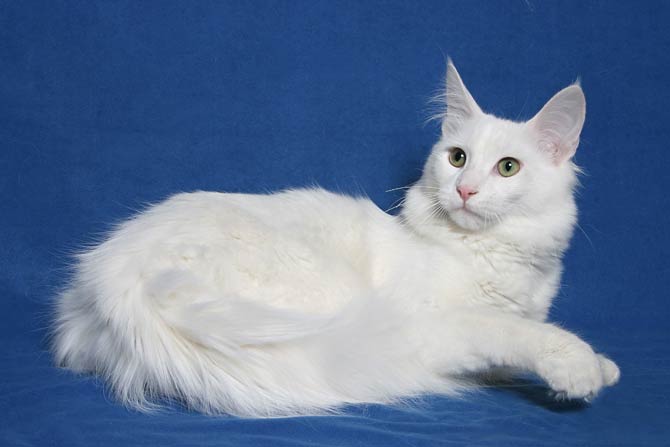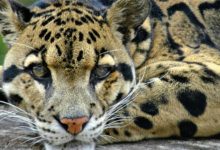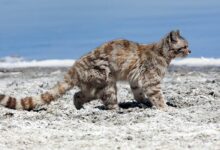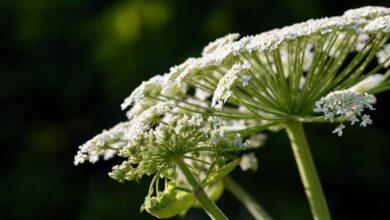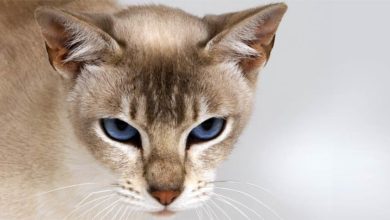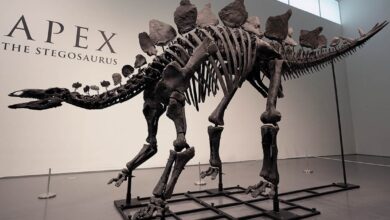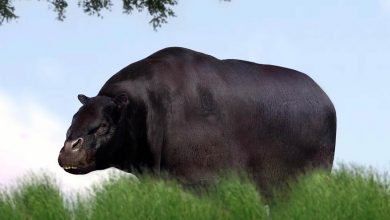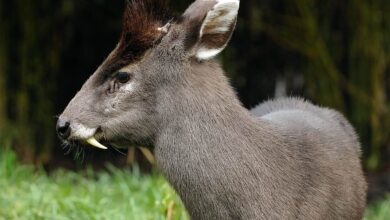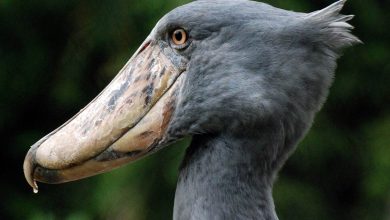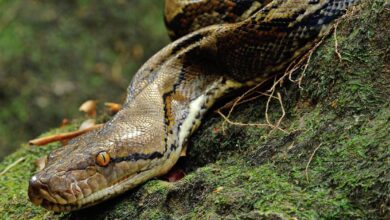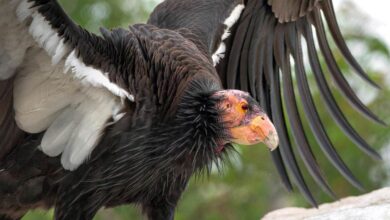Turkish Angora, Ankara cat
The breed, naturally occurring in Turkey, is nowadays considered one of the most beautiful. Thanks to the white (and not only) color and unusual irises, it attracts the attention of everyone who has the opportunity to see it with their own eyes. Here is the unusual and rare Turkish Angora.
FIFe classification
- Category II: Semi-longhair cats
- EMS code: TUA
- Other times names: Angora or Ankara cat
- Country of origin: Turkey
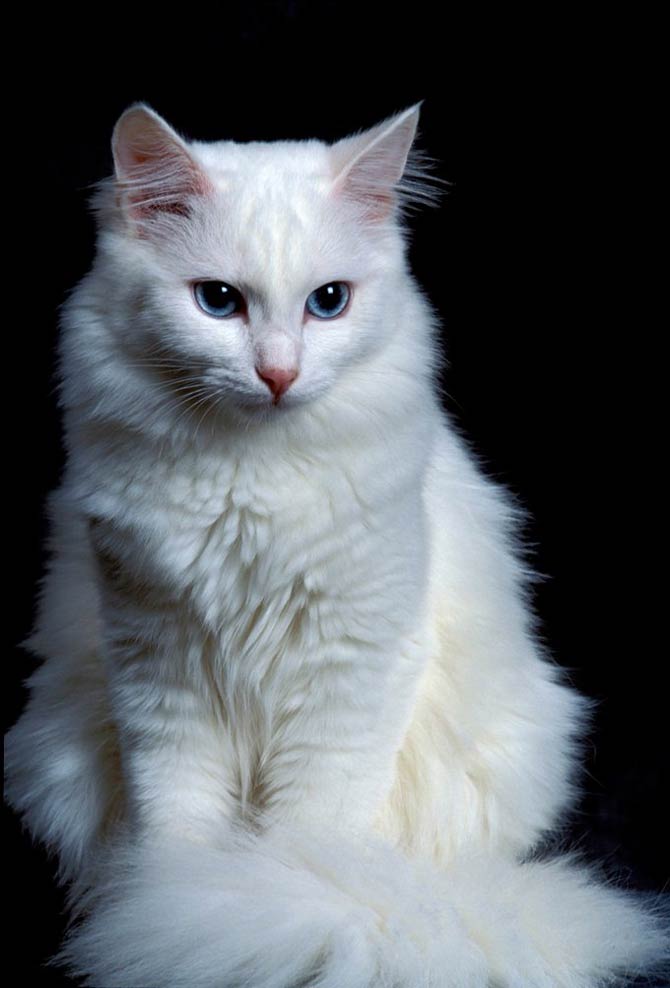
History of the breed
There have been many theories about the origins of Angora. One of them claims that the ancestor of the breed is the wild Asian Pallas’s cat (Otocolobus manul). However, specialists easily refute this thesis because the manul is a wild and aggressive cat, while the Angora is characterized by a delicate disposition. Another, a more likely theory is that Angora is descended from an African wildcat (Felis lybica), like most domestic cats.
Europe got to know Turkish Angoras in the 16th century; at that time, they were sent to Great Britain, France, Russia and Afghanistan. It appeared in the USA in the 18th century and quickly gained popularity. However, with the arrival of the Persian cat, the Angora lost its success.
To return to favor, breeders began crossing the Turkish breed with the Persian cat to make the coat longer and silky smooth. As a result of mass crossings with Persians, the Turkish breed lost its genetic purity, which brought with it another loss of popularity.
It was only the specter of the extinction of the breed that forced the Turkish government to act towards its recovery. In the twentieth century, a precise breeding plan was developed, according to which the Turkish Angora was to have blue or variegated eyes and snow-white fur.
In the 1960s, Angoras were brought en masse from Turkey to the US (mainly by American soldiers stationed in Turkey) along with their certificates of origin. Over time, the number of these cats increased so much that the CFA (Cat Fanciers Association) registered them as a separate breed. In the 1970s, the same federation recognized that only individuals with white fur can be referred to as Angora. However, in 1978 all-natural colors were accepted.
Nevertheless, the most desirable color variety today is the White Angora. However, breeders still consider other varieties, as the white color of the coat is associated with health problems and the vitality of the cat. Breed enthusiasts also contribute to the popularization of other color varieties, as it is well known that the white variety is the rarest and therefore difficult to obtain.

Characteristic
Appearance
In Turkey, this breed is natural – it was created without human intervention. Therefore, breeders try to make Angoras resemble the natural variety. They should therefore have a long, slender figure, slender limbs, long tail and fur, as well as large ears and wide-open eyes. The face should be slim and the snout slightly elongated.
The most distinctive feature of the Angora’s appearance is its beautiful, long, silky smooth fur that flickers when the cat moves. It consists of only one layer, so the pollutants simply “fly through” them. The length of the coat depends on the season: it gets thinner in the summer and the Angora looks more like a shorthair cat.
With the onset of winter, the hair lengthens and thickens, and the tail resembles a Persian cat (similar changes in the appearance of fur occur in another Turkish breed – the Turkish Van). Clear changes in the appearance of the coat show that Angora is adapted to the changing climate of Turkey – harsh winters and hot summer months.
Thanks to the single-layer coat, you do not have to worry about possible tarnishing, which is often found in long-haired cats with a double-layer coat.
As the Turkish Angora is related to the Turkish Van, it likewise tends to be different colored in the irises. From a medical point of view, it is a congenital defect that occurs not only in cats but also in other species (including humans). In Angora, one eye is usually amber and the other is blue/green.
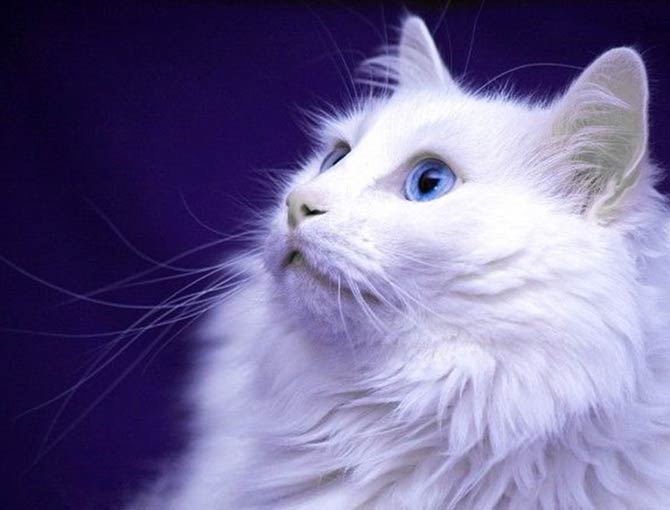
Temperament
At first glance, Angora appears delicate and fearful. However, if we get to know her better, we will be surprised by her intelligence and physical fitness. It perfectly climbs the highest places in the house, it can open doors, and in her every action you can see dignity.
One can risk a statement that Angora has two personalities: one is a calm, aristocratic meow, the other is an exuberant, nature-loving and fun-loving dodger. It is very fond of people and does a lot to make them pay attention to her. Perhaps that is why it is sometimes called the alpha cat.
It shows openness towards guests, but shows true love only to the caretakers. Since it is very fond of company, it is suitable for a home where another cat or dog already lives. The cat sleeps on its owner’s lap or shoulders whenever there is an opportunity. At night, it can sleep close to her face, on a pillow. It gives herself completely to the owner, because Angora is very loyal and loving, and in addition, independent and full of initiative.
Angora needs cheerful and patient caregivers. For if it comes up with an idea, it’s hard to dissuade it. It is also distinguished by a great willingness to verbal communication – similar to a Tonkinese cat, it likes to “talk” to people.

Health condition
The gene responsible for the white coat and blue eyes is also responsible for deafness. This problem is not only found in Angora, but also in other white breeds. Often, single-sided deafness occurs on the side of the blue eye (in the case of different colors). Some, however, are double-sided deaf (mostly those with a pair of blue eyes). Nevertheless, many blue-eyed and varicolored individuals can hear normally. Deaf cats, on the other hand, can lead a happy and long life if they stay only indoors.
In addition to deafness, Angora can suffer from hereditary ataxia (incoherence of movements, i.e. impaired coordination of the body). Kittens affected by this disease usually do not live to adulthood.
Hypertrophic cardiomyopathy is relatively rare within the breed. It is more common in males and is more severe than in females.
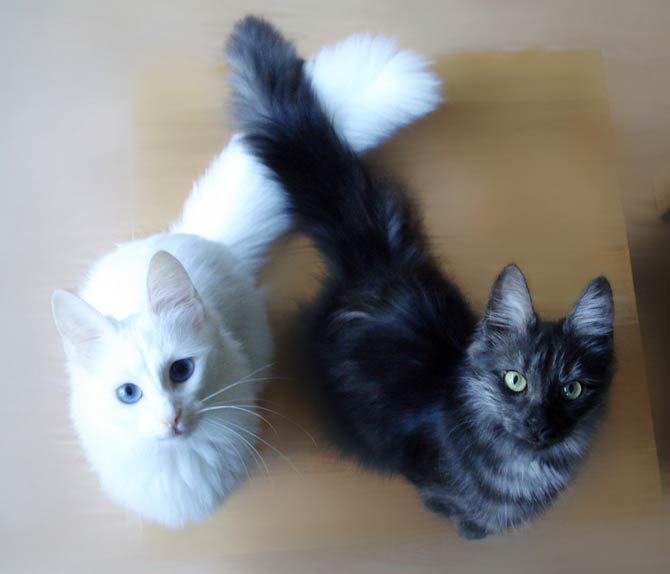
Detailed data / dimensions (size)
Turkish Angora, Angora, Angora cat
- Height at the withers: 20-25 cm (7.8 – 9.8 in)
- Body length: 60 cm (23.6 in)
- Weight: 3-5 kg (6.6 – 11 lb)
- Lifespan: 12-18 years
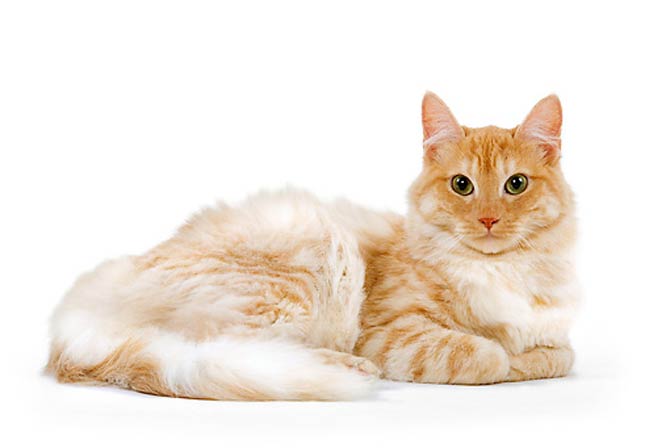
Turkish Angora – interesting facts
- The name of the breed in Turkish is Ankara kedisi, which simply means “Ankara cat”. This term is related to the breed’s place of origin – the Ankara region, formerly known as the Angora.
- The Turkish Angora is one of the oldest natural breeds of the domestic cat.
- Long hair is probably the result of a genetic mutation that occurred centuries ago in the mountainous areas of Turkey.
- The Turks believe that Angora was Muhammad’s favorite cat. It was called Muezza and was characterized by the eyes of many different colors.
- The villain Ernst Stavro Blofeld, who appeared in the films about the adventures of James Bond, owned a Turkish angora cat.
